
Dr. Vuong Anh Duong, Deputy Director of the Department of Medical Examination and Treatment Management, Ministry of Health - Photo: VGP
Regarding this content, a reporter from the Government Electronic Newspaper had an interview with Dr. Vuong Anh Duong, Deputy Director of the Department of Medical Examination and Treatment Management, Ministry of Health .
Lowest nursing ratio in ASEAN
Could you please evaluate the current situation, quantity and quality of the nursing staff at medical facilities in our country? Compared to other countries in the region, how is this team in our country, sir?
Dr. Vuong Anh Duong: Currently, the nursing team plays a key role in the Vietnamese health system, from commune and ward levels to end-line hospitals. However, we are facing a shortage of nurses in terms of quantity, structure and professional quality compared to actual requirements and compared to the general level of the region as well as the world .
Vietnam currently has about 140,000 to 150,000 nurses, equivalent to 14 to 15 nurses per 10,000 people. This rate is among the lowest in ASEAN. Meanwhile, this figure in countries in the region and around the world is much higher.
Thailand has about 20-25 nurses per 10,000 people; Malaysia about 30-35; Singapore over 70; OECD countries average from 80 to 120 nurses per 10,000 people. This is a significant gap that we need to make efforts to narrow in the coming time.
Resolution 20 of the Central Committee has set a specific target of having about 25 nurses per 10,000 people by 2025 and 33 nurses per 10,000 people by 2030. This is a very important basis for the health sector and localities to develop plans for recruitment, training and human resource allocation in accordance with development requirements.
Regarding training levels, we are in a transition phase of raising standards. Currently, college nursing accounts for nearly 50%, university nursing accounts for about 38-40%, while post-graduate nursing is still very low, only about under 2%.
In developed countries, the majority of nurses have a university degree or higher. In Australia, nearly 23% of nurses have a postgraduate degree, in the US this figure is about 20%. Many ASEAN countries such as Thailand, Malaysia, and the Philippines have developed a system of specialized training and advanced practice nursing. This shows that Vietnam needs to accelerate the standardization of qualifications, especially advanced training and specialized training.
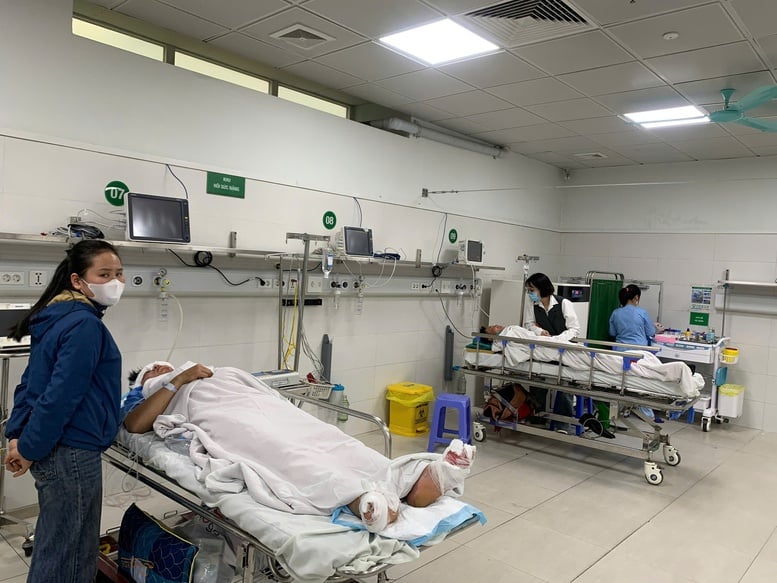
The nursing rate in our country is the lowest in the ASEAN group - Photo: VGP/HM
Nurses work at a very high intensity.
Is this the reason why nurses in our country have to work at such high intensity, sir?
Dr. Vuong Anh Duong: The shortage of highly qualified human resources is what makes domestic nurses have to work at a very high intensity, with limited time for basic care, counseling and psychological support for patients.
Some hospitals still have to mobilize family members to support daily care, especially in intensive care units, directly affecting service quality and patient experience.
It can be seen that Vietnam's nursing human resources are in the process of development but there is still a significant gap compared to the requirements of a modern and internationally integrated healthcare system.
With the completed legal framework and very clear goals in Resolution 20, along with the attention of the Ministry of Health and localities, we believe that the nursing team will be greatly strengthened in both quantity and quality, contributing to improving the quality of patient care and enhancing the competitiveness of the Vietnamese healthcare system in the region and in the world.
With the current quantity and quality of nurses, can they meet the people's needs for medical examination, treatment and health care, sir?
Dr. Vuong Anh Duong: Current reality shows that nursing shortages occur at most levels, especially at end-line hospitals and intensive care units, where patients need continuous intensive care.
According to a recent survey by the Department of Medical Examination and Treatment, on average, a nurse in the intensive care unit has to take care of 3-4 patients in the same shift. Meanwhile, in many developed countries such as the United States, Australia or European countries, this ratio is usually only 1 nurse for 1-2 patients, depending on the severity. A lower ratio helps nurses have enough time to closely monitor developments, provide comprehensive care and prevent medical incidents.
In lower-level hospitals, due to the lack of nursing staff, basic care such as support for personal hygiene, nutrition, and ulcer treatment, etc., in many places still has to rely on the patient’s family. This directly affects the quality of patient care.
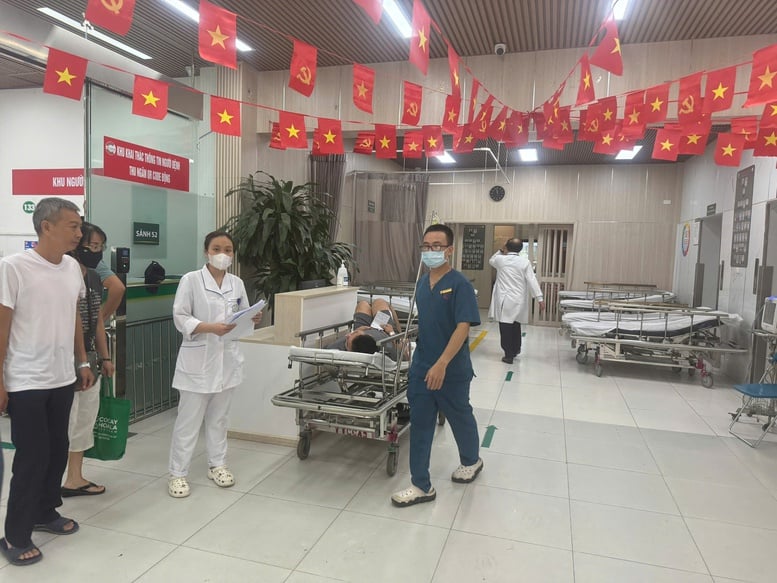
It is necessary to invest synchronously to ensure both the quantity and quality of the nursing staff - Photo: VGP/HM
Need to invest synchronously to ensure both quantity and quality of nursing
Sir, how does the nursing training system in our country respond to the need to improve the quantity and quality of nurses, serving the health care needs of the people now and in the future?
Dr. Vuong Anh Duong: Currently, Vietnam's nursing training system is quite diverse with all levels of training from intermediate, college, university to postgraduate. There are over 100 institutions nationwide participating in nursing training. Many schools have proactively innovated their programs, approached ASEAN regional competency standards and gradually integrated internationally.
In recent years, nursing training has made significant progress. The number of nurses upgrading their qualifications has been continuously increasing, especially from college to university and from university to postgraduate.
However, we must also recognize that training quality is still uneven among facilities; clinical practice conditions at some schools do not meet requirements; the linkage of training with human resource requirements at hospitals, with the scope of expertise, is somewhat limited.
It can be said that Vietnam's nursing training system is changing strongly towards modernization and integration. However, we need to continue to invest synchronously to ensure both the quantity and quality of nursing human resources, to better meet the development requirements of the health sector and the health care needs of the people.
Causes of conflicts at medical facilities
As you just said, when the number of nurses is not enough, patients are not monitored and cared for comprehensively and continuously. Is this one of the reasons leading to conflicts between medical staff and patients and their families in recent times, sir?
Dr. Vuong Anh Duong: Nursing shortage is currently one of the serious problems of the health system not only in Vietnam but also in many countries around the world. When the number of nurses is insufficient, patients are not monitored and cared for comprehensively and continuously; basic needs such as personal hygiene, nutritional support, ulcer prevention, rehabilitation, etc. are difficult to ensure properly and sufficiently. This partly affects the quality of comprehensive care for patients.
In many clinical departments, especially intensive care units, a large proportion of hospitals still have to mobilize patients' relatives to participate in daily care support. This not only creates a burden for the patient's family but also poses a risk of hospital infection.
In addition, nurses have to work in overloaded conditions, with long shifts and high intensity, while income and working conditions are not commensurate. Prolonged pressure inevitably leads to stress and fatigue.
However, this is not the main cause of conflicts between patients, patients' families and medical staff in recent times.
Conflicts in healthcare facilities have many causes, coming from many sides. We all do not want this to happen. The only goal of both patients, their families and healthcare workers is to regain the health and life of the patient. Therefore, we all need to be calm, cooperate and accompany each other in such situations.
Expanding the scope of practice and creating a legal corridor for nurses to be more proactive
In your opinion, what fundamental solutions do state management agencies need to have to improve the quantity and quality of nursing staff in our country? Currently, what mechanisms and policies need to be changed to create conditions for strong development of this human resource?
Dr. Vuong Anh Duong: To develop the nursing team in both quantity and quality, we need to synchronously deploy many fundamental and long-term solutions, with strong participation from ministries, branches and localities.
Firstly , regarding human resources, it is necessary to clearly identify the volume and specificity of nursing work in order to develop appropriate job standards and positions, as a basis for increasing recruitment and arranging enough nurses at medical examination and treatment facilities.
Prioritize ensuring enough nurses in key departments such as intensive care, emergency, neonatal, geriatric, etc. to move towards comprehensive patient care without having to mobilize support from family members.
Along with that, continue to standardize training levels towards raising standards and specialization; encourage nurses to transfer to university and postgraduate studies and promote specialized training.
Second , in terms of professional capacity and management, it is necessary to improve nursing leadership and management capacity at all levels; strengthen training in communication skills, soft skills, professional ethics and promote the application of technology in patient care.
The Ministry of Health is gradually expanding the scope of nursing practice according to the Law on Medical Examination and Treatment 2023, creating a legal corridor for nurses to be more proactive in implementing care instructions and promoting their professional role.
Third , regarding policies and working conditions, this is the key factor to retain and motivate nurses. It is necessary to continue to improve salary regimes, preferential allowances and benefits appropriate to the specific nature of the profession; at the same time, invest in building a safe and healthy working environment, especially in high-pressure departments and difficult areas. Ensuring material and spiritual life will help nurses feel secure in their commitment and long-term dedication.
It can be said that we currently have a favorable foundation as the legal corridor for the nursing profession is being completed, and the attention of the Party, State and Ministry of Health for the care workforce is growing.
However, there are still many difficulties such as limited financial resources, uneven distribution of human resources and remuneration policies that have not really created strong attraction.
Therefore, it is necessary to have the cooperation of the whole society, of employers and of each nurse herself to continuously improve capacity, affirm the role and image of Vietnamese nurses as professional, dedicated, compassionate and internationally integrated.
Thank you!
Hien Minh (performed)
Source: https://baochinhphu.vn/thieu-dieu-duong-giai-phap-nao-truoc-noi-lo-lon-cua-nganh-y-102251103152714166.htm


![[Photo] Ho Chi Minh City Youth Take Action for a Cleaner Environment](https://vphoto.vietnam.vn/thumb/1200x675/vietnam/resource/IMAGE/2025/11/04/1762233574890_550816358-1108586934787014-6430522970717297480-n-1-jpg.webp)
![[Photo] The road connecting Dong Nai with Ho Chi Minh City is still unfinished after 5 years of construction.](https://vphoto.vietnam.vn/thumb/1200x675/vietnam/resource/IMAGE/2025/11/04/1762241675985_ndo_br_dji-20251104104418-0635-d-resize-1295-jpg.webp)

![[Photo] Panorama of the Patriotic Emulation Congress of Nhan Dan Newspaper for the period 2025-2030](https://vphoto.vietnam.vn/thumb/1200x675/vietnam/resource/IMAGE/2025/11/04/1762252775462_ndo_br_dhthiduayeuncbaond-6125-jpg.webp)
![[Photo] Ca Mau "struggling" to cope with the highest tide of the year, forecast to exceed alert level 3](https://vphoto.vietnam.vn/thumb/1200x675/vietnam/resource/IMAGE/2025/11/04/1762235371445_ndo_br_trieu-cuong-2-6486-jpg.webp)






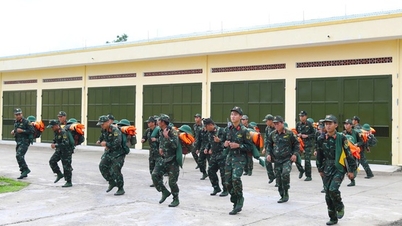


































































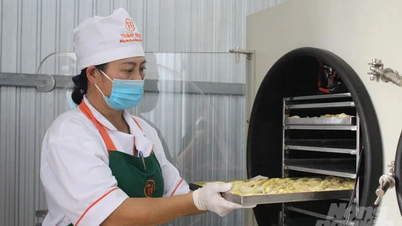

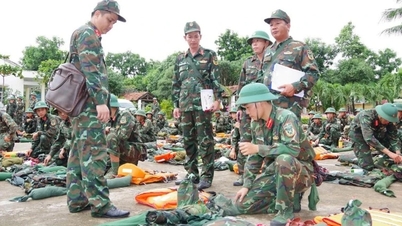














Comment (0)